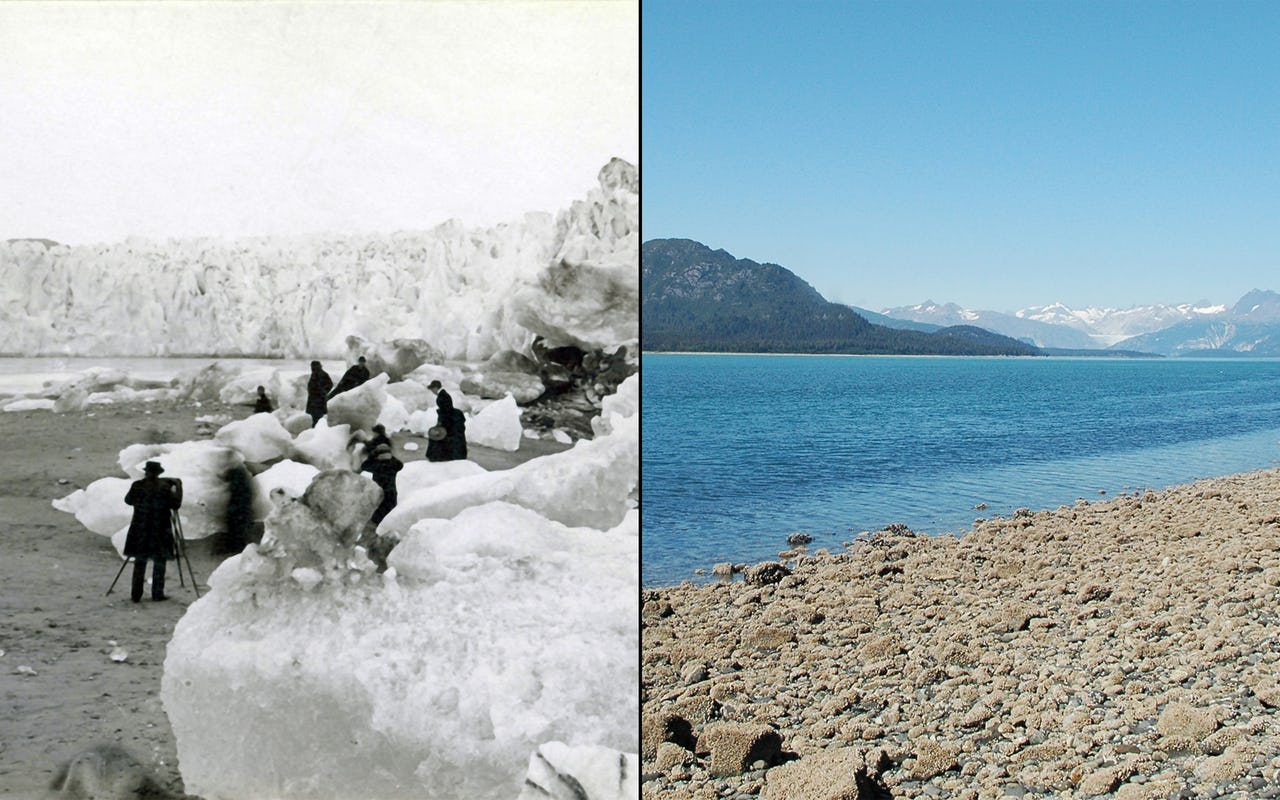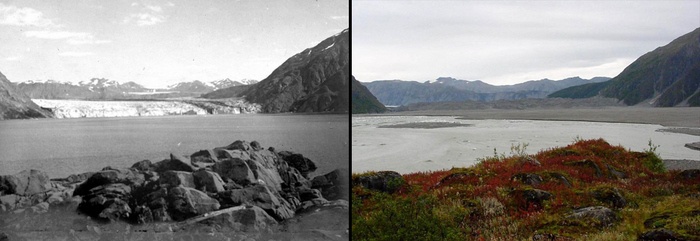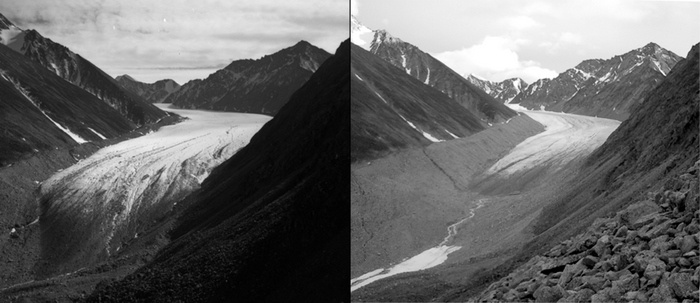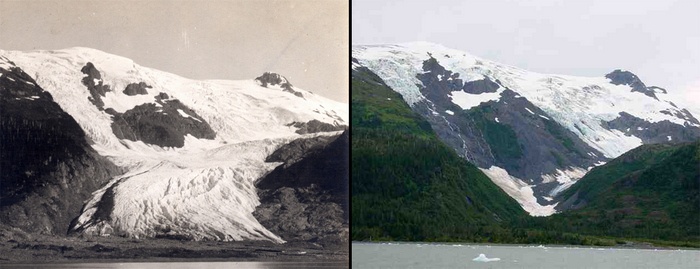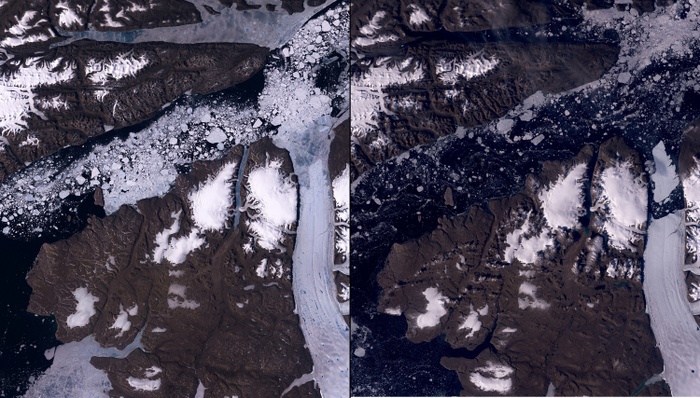|
|
|
June 1907 August 5, 2004
Okpilak Glacier, Alaska
1907 photo taken by Ernest Leffingwell; 2004 photo taken by Matt Nolan.
|
|
|
|
August 1906 September 7, 2003
Carroll Glacier, Alaska
1906 photo taken by Charles Will Wright; 2003 photo taken by Bruce F. Molnia.
|
|
|
|
August 1906 June 21, 2004
Carroll Glacier, Alaska
1906 image taken by Charles Will Wright. 2004 image taken by Bruce F. Molnia.
|
|
|
|
July 24, 1909 August 13, 2004
Holgate Glacier, Alaska
1909 image taken by Ulysses Sherman Grant. 2004 image taken by Bruce F. Molnia.
|
|
|
|
July 1958 August 14, 2003
McCall Glacier, Alaska
1958 picture taken by Austin Post. 2003 picture taken by Matt Nolan.
|
|
|
|
July 30, 1909 August 11, 2004
McCarty Glacier, Alaska
1909 picture taken by Ulysses Sherman Grant. 2004 picture taken by Bruce F. Molnia.
|
|
|
|
June 29, 1909 September 4, 2000
Toboggan Glacier, Alaska
1909 picture photographed by Sidney Paige. 2000 picture photographed by Bruce F. Molnia.
|
|
|
|
May 12, 2001 July 7, 2003. June 19, 2005
Along the margin of the Greenland Ice Sheet, outlet glaciers flow as icy rivers through fjords and out to sea. These pictures show a fjord in which Helheim glacier (on the left) is crumbling into large and small icebergs (light blue, on the right). The glacier outlet (“calving front”) held steady from the 1970s until about 2001, then began to retreat towards its source about 7.5 kilometers (4.7 miles) between 2001 and 2005. The glacier’s flow to the sea has also sped up.
NASA images created by Jesse Allen, NASA Earth Observatory, using data from the Advanced Spaceborne Thermal Emission and Reflection Radiometer (ASTER) on NASA’s Terra satellite.
|
|
|
June 26, 2010 August 13, 2010
Petermann Glacier, Greenland. An iceberg more than four times the size of Manhattan broke off the Petermann Glacier (the curved, nearly vertical stripe stretching up from the bottom right of the images) along the northwestern coast of Greenland. Warmer water below the floating ice and at the sea’s surface were probably responsible for the break.
Images taken by the Enhanced Thematic Mapper Plus sensor aboard Landsat 7. |
|
|
|
Warming Island, Greenland. On January 16, 2007, the New York Times reported that a new island had been found in Greenland. Warming Island was thought to be an ice-covered peninsula, but it was exposed as an island in 2005, when an ice bridge melted to reveal an open-water strait. More islands like this may be discovered if the Greenland ice sheet continues to disappear. Images taken by the Thematic Mapper sensor aboard Landsat 5 and the Enhanced Thematic Mapper Plus sensor aboard Landsat 7.
|
|
